- John Deere Warning Lights & Dash Symbols
- All John Deere Instrument Panel Symbols / Indicator Lights
- General Dash Symbols
- Engine-related Dash Symbols
- Body-related Dash Symbols
- PTO-related Dash Symbols
- Hydraulic-related Dash Symbols
- Electric-related Dash Symbols
- Color of John Deere Indicator Lights
- How to Reset John Deere Warning Lights?
John Deere tractors and equipment come with a range of dashboard symbols, warning lights, and indicators that help operators monitor performance, safety, and potential issues. These symbols cover key systems such as engine status, transmission, hydraulics, electrical functions, and emissions.
John Deere Warning Lights & Dash Symbols
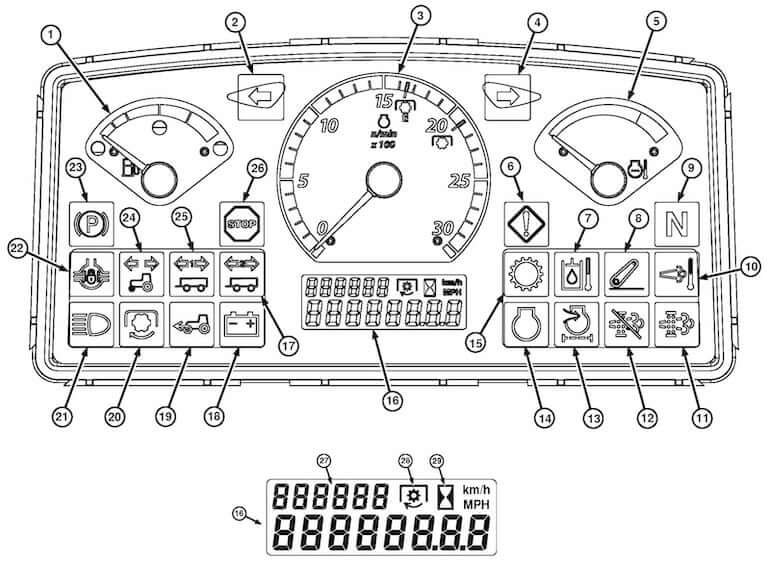
| # | Name | Symbol / Indicator Description |
|---|---|---|
| 1 | Fuel Level Gauge | Indicates the remaining amount of fuel in the tank. |
| 2 | Left Turn | Flashes when the turn signal switch is activated for the left-hand side. |
| 3 | Tachometer | Displays the engine speed in revolutions per minute (RPM). |
| 4 | Right Turn | Flashes when the turn signal switch is activated for the right-hand side. |
| 5 | Engine Coolant Temperature | Indicates the engine coolant temperature. The red area warns of overheating due to low coolant level, dirty radiator, or clogged screen. Immediate engine shutdown is recommended to prevent damage. |
| 6 | Service Alert | Illuminates when a malfunction occurs. Check the error message in the Information Display. |
| 7 | Hydraulic Oil Temperature | Illuminates when the hydraulic oil overheats. Check the error message in the Information Display. |
| 8 | Electrohydraulic Hitch | Illuminates when a hitch malfunction occurs. Check the error message in the Information Display. |
| 9 | Neutral | Illuminates when the transmission reverser is in the neutral position. It flashes when the operator improperly shifts into reverse. Cycle the reverser lever back to neutral if needed. If flashing along with the Transmission Information indicator, it indicates a malfunction. |
| 10 | High Exhaust Temperature | Illuminates when temperatures inside the exhaust filter allow active filter cleaning. |
| 11 | Exhaust Filter | Illuminates when the soot level in the filter is high and exhaust filter cleaning is required. |
| 12 | Exhaust Filter Disabled | Illuminates when the exhaust filter cleaning switch is disabled. |
| 13 | Engine Intake / Combustion Air Filter | Illuminates when the air cleaner element is clogged. Clean or replace the element. |
| 14 | Engine Status | Illuminates when an engine malfunction occurs. Check the oil level and review the error message in the Information Display. |
| 15 | Transmission Status | Illuminates when a transmission malfunction occurs. Review the error message in the Information Display. |
| 16 | Information Display | Displays various information such as speedometer, hour meter, transmission speed selection, PTO speed, diagnostic trouble codes, and on-board diagnostics information. |
| 17 | Trailer 2 Indicator | Starts flashing when trailer turn-signal or hazard warning lights are switched on. |
| 18 | Charging System | Illuminates when an alternator malfunction occurs. |
| 19 | MFWD Engaged | Illuminates when mechanical front-wheel drive is engaged. |
| 20 | PTO Engaged | Illuminates when the rear PTO is engaged. |
| 21 | Headlight High Beam | Illuminates when the headlights are switched to high beam. |
| 22 | Differential Lock | Illuminates when the differential lock is engaged. |
| 23 | Park Brake | Illuminates when the park brake is engaged. |
| 24 | Vehicle Turn Signal | Starts flashing when vehicle turn-signal or hazard warning lights are switched on. |
| 25 | Trailer 1 Indicator | Starts flashing when trailer turn-signal or hazard warning lights are switched on. |
| 26 | STOP | Illuminates when a serious malfunction occurs. Shut off the engine immediately and determine the cause by reviewing the error message in the Info Display. |
| 27 | Vehicle Info Display | Shows vehicle wheel speed, engine hours, PTO speed, and diagnostic code information. |
| 28 | PTO | Illuminates when the PTO speed is selected. |
| 29 | Hour Meter | Illuminates when engine hours are displayed on the Vehicle Info Display. |
If a warning light illuminates or a symbol appears on the dashboard, take prompt action to address the issue. Stop the tractor safely, consult the operator’s manual or onboard diagnostics system for guidance, and address any underlying problems before continuing operation.
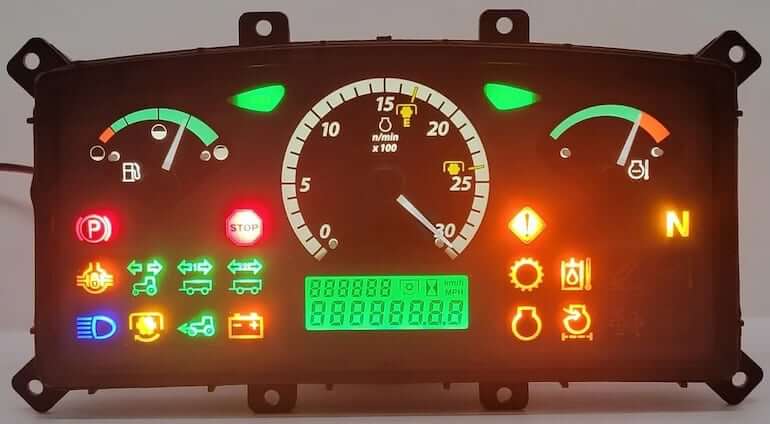
All John Deere Instrument Panel Symbols / Indicator Lights
John Deere dashboard warning lights and symbols play a crucial role in indicating various conditions and alerts during tractor operation. Here are some common warning lights and symbols you may encounter on a John Deere tractor dashboard:
General Dash Symbols
| Symbol | Name | Dashboard Symbol Description |
|---|---|---|
 |
Stop | Indicates a serious tractor malfunction that requires immediate attention. When this red light flashes, it is crucial to shut down the engine immediately to prevent further damage |
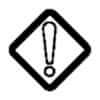 |
Service Alert | Illuminates when a malfunction occurs (review error code in Information Display) |
 |
Read Operator’s Manual | Indicates the need to consult the operator’s manual for information |
 |
Fast | Indicates a high-speed setting or mode |
 |
Slow | Indicates a low-speed setting or mode |
 |
Creep | Indicates engagement of the tractor’s super creep gear, which provides exceptionally slow speeds for specific applications. |
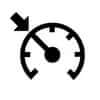 |
Cruise Control | Maintains a constant speed set by the operator |
 |
Limp Home | Activates a reduced power mode for emergency situations |
 |
Lock | Indicates that a function or system is locked or engaged |
 |
ON (Engaged) | Indicates that a system or function is active or engaged |
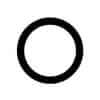 |
OFF (Disengaged) | Indicates that a system or function is inactive or disengaged |
 |
Transmission Neutral Indicator | indicates that the tractor is in neutral gear. This light signifies that the transmission is in a neutral position, meaning the tractor is not engaged in any forward or reverse movement. |
 |
Operator Presence Sensor (OPS) | Indicates the status of the operator presence sensor. The OPS is designed to ensure that the operator is present in the seat for safe operation of the tractor. |
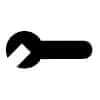 |
Service | Indicates that the tractor requires servicing or maintenance |
Engine-related Dash Symbols
| Symbol | Name | Dashboard Symbol Description |
|---|---|---|
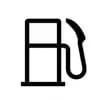 |
Fuel Level | Indicates the level of fuel in the tank |
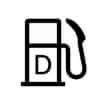 |
Diesel Fuel | Indicates the level of diesel fuel in the tank |
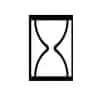 |
Hourmeter / Elapsed Operating Hours | Displays the total operating hours or elapsed time |
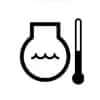 |
Engine Temperature / Coolant Temperature | Warns the operator when the engine coolant temperature exceeds safe operating limits, indicating potential overheating. |
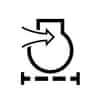 |
Engine Intake / Combustion Air Filter | Indicates the condition of the engine air filter. Warns the operator when the air filter becomes clogged or restricted, reducing airflow to the engine and affecting performance. |
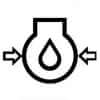 |
Engine Oil Pressure | Indicates the oil pressure in the engine. Warns the operator when engine oil pressure drops below a safe level, indicating potential engine damage or oil system malfunction. |
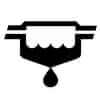 |
Water Separator | Indicates the status of the water separator in the fuel system |
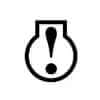 |
Engine Malfunction | Indicates the presence of a fault code or error condition in the engine control system, prompting the operator to address the issue promptly. |
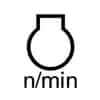 |
Engine Rotational Speed | Displays the rotational speed of the engine |
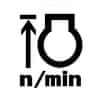 |
Engine Rev Limiter | Limits the maximum engine speed to prevent damage |
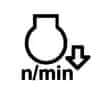 |
Engine Over Speed | Alerts when the engine exceeds its maximum safe speed |
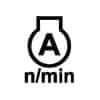 |
Engine RPM Memory A | Stores and recalls a specific engine RPM setting |
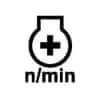 |
Engine RPM Adjuster | Allows adjustment of the engine RPM |
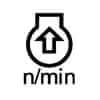 |
Engine RPM Increase | Increases the engine RPM |
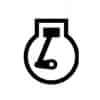 |
Engine Run | Indicates that the engine is running |
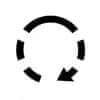 |
Engine Start | Initiates the engine starting process |
 |
Engine Stop | Stops the engine |
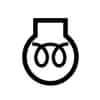 |
Engine Heater (Low Temperature Start Aid) | Illuminates when the engine block heater is in operation, helping to warm the engine for easier starting in cold conditions. Diesel Preheat / Glow Plugs |
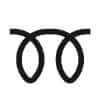 |
Engine Heater Temperature | This light may illuminate when the engine heater is in operation to warm up the engine in cold conditions. |
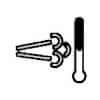 |
High Exhaust Temperature | Indicates that the temperature inside the exhaust filter is high, which may require attention to prevent damage to the exhaust system. |
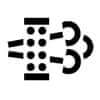 |
Regeneration | Initiates the regeneration process for the diesel particulate filter |
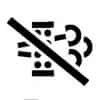 |
Regeneration Inhibit | Prevents regeneration from occurring |
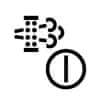 |
Regeneration Switch | Activates the regeneration process manually |
 |
Parked Regeneration | Initiates regeneration while the vehicle is stationary |
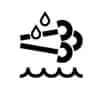 |
DEF / AdBlue-Level | Indicates the level of Diesel Exhaust Fluid (DEF) or AdBlue |
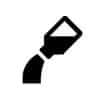 |
DEF / AdBlue Low Level | Alerts when the DEF or AdBlue level is low |
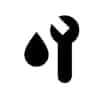 |
DEF / AdBlue Poor Quality | Alerts when the quality of DEF or AdBlue is compromised |
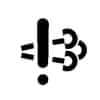 |
DEF / AdBlue Trouble | Indicates a problem with the DEF or AdBlue system |
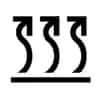 |
DEF / AdBlue Freeze | Alerts when DEF or AdBlue is at risk of freezing |
Body-related Dash Symbols
| Symbol | Name | Dashboard Symbol Description |
|---|---|---|
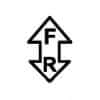 |
Travel Direction | Indicates the current direction of tractor travel |
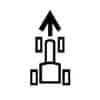 |
Travel Direction Forward | Indicates forward travel direction |
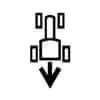 |
Travel Direction Rearward | Indicates reverse travel direction |
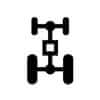 |
4-Wheel Drive On | Indicates engagement of the tractor’s four-wheel-drive (4WD) system with differential lock, providing increased traction in challenging terrain. |
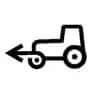 |
Four-wheel On | Engages the four-wheel drive system |
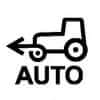 |
Four-wheel Automatic | Automatically adjusts the four-wheel drive system based on conditions |
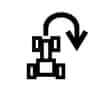 |
Headland Management System | Manages tractor operations during headland turns |
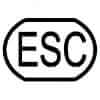 |
Escape | Allows exiting a menu or mode |
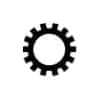 |
Transmission Service Required | Transmission service required for John Deere PowrQuad Plus, AutoQuad II or AutoPowr only |
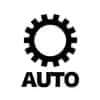 |
Auto Transmission | Engages automatic transmission mode |
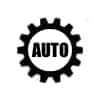 |
Auto Transmission | Indicates the status of the automatic transmission system. This light may illuminate to indicate that the automatic transmission is engaged or functioning. |
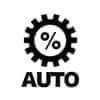 |
Auto Transmission Sensitivity | Adjusts the sensitivity of the automatic transmission |
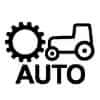 |
Auto Transmission Road Control | Optimizes transmission settings for road conditions |
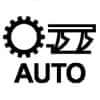 |
Auto Transmission Field Control | Optimizes transmission settings for field conditions |
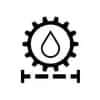 |
Transmission Oil Filter | Indicates a restricted or clogged transmission oil filter, which can impede hydraulic function and transmission performance. |
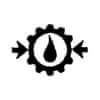 |
Transmission Oil Pressure | Indicates the pressure of the transmission oil. This light may illuminate if the transmission oil pressure is too low, signaling a potential problem with the transmission system. |
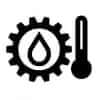 |
Transmission Oil Temperature | Warns the operator when the transmission oil temperature exceeds safe operating levels, indicating potential overheating or insufficient cooling. |
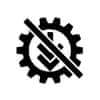 |
Gear Shifting Warning | This warning symbol indicates a problem with the gear shifting mechanism. It may indicate that the tractor is in the wrong gear, or that the gear shifting mechanism is not functioning properly |
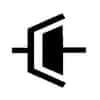 |
Clutch | Engages or disengages the tractor clutch |
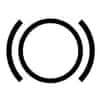 |
Brake | Alerts the operator to low brake fluid levels in the tractor’s brake system, indicating potential brake failure or leakage. |
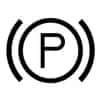 |
Parking Brake | Engages the tractor parking brake. Illuminates when the handbrake or parking brake is engaged, reminding the operator to disengage it before driving. |
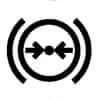 |
Air Brake | Indicates the status of the air brake system |
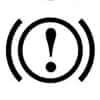 |
Brake Failure / Malfunction | This symbol indicates a problem with the braking system. It may indicate a failure or malfunction in the brakes, such as low brake fluid or a problem with the brake pads. |
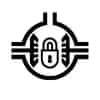 |
Differential Lock | Indicates engagement of the tractor’s differential lock, enhancing traction in slippery or uneven terrain |
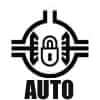 |
Differential Lock Automatic | Automatically engages the differential lock based on conditions. |
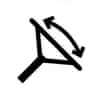 |
Steering Wheel Tilt | Adjusts the tilt angle of the steering wheel |
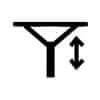 |
Steering Wheel Telescope | Adjusts the telescoping position of the steering wheel |
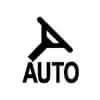 |
Automatic Steering Control | Engages automatic steering control |
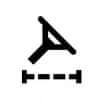 |
Steering Oil Filter | Indicates the status of the steering oil filter |
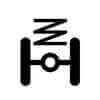 |
Front Suspension | Indicates the status of the front suspension system |
 |
Front Suspension Automatic | Automatically adjusts the front suspension based on conditions |
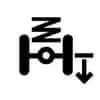 |
Front Suspension Down | Lowers the front suspension |
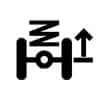 |
Front Suspension Up | Raises the front suspension |
 |
Front Suspension Lock | Locks the front suspension in position |
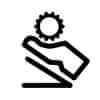 |
Twin Touch Foot Controls | The symbol which provide quick and easy forward/reverse operation. This feature is commonly found in John Deere tractors and allows for smooth and efficient operation. The symbol is used to indicate the presence of this feature and to help operators understand how to use it |
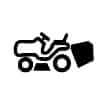 |
Material Collection System | When the symbol is illuminated, it indicates that the material collection system is active or in use |
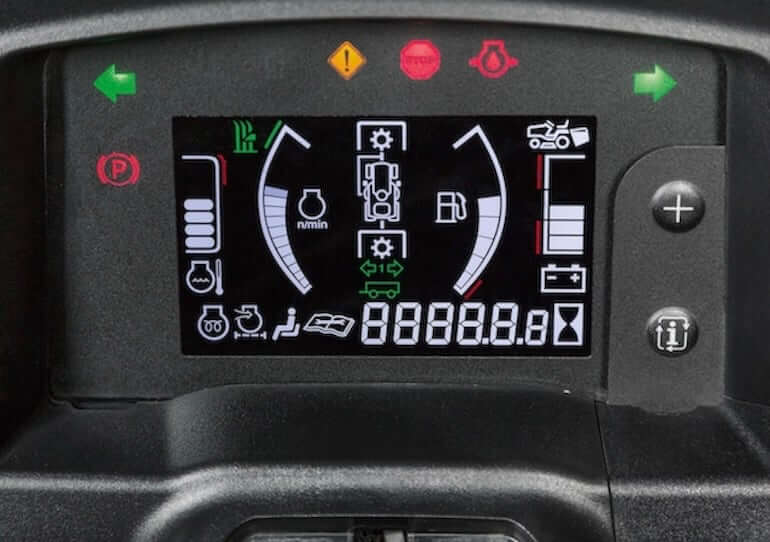
PTO-related Dash Symbols
| Symbol | Name | Dashboard Symbol Description |
|---|---|---|
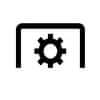 |
PTO Off (Disengaged) | Deactivates the power take-off |
 |
PTO On (Engaged) | Activates the power take-off |
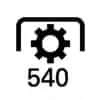 |
PTO 540 rpm | Indicates engagement of the tractor’s power take-off (PTO) system at 540 revolutions per minute |
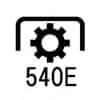 |
PTO 540E rpm | Indicates the power take-off speed of 540E rpm |
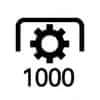 |
PTO 1000 rpm | Indicates engagement of the tractor’s power take-off (PTO) system at 1000 revolutions per minute |
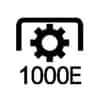 |
PTO 1000E rpm | Indicates the power take-off speed of 1000E rpm |
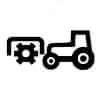 |
PTO Front | Indicates the front power take-off is active for front-mounted implements |
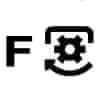 |
PTO F Front | Indicates the front power take-off is active for front-mounted implements |
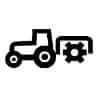 |
PTO Rear | Indicates the rear power take-off is active for front-mounted implements |
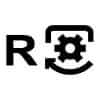 |
PTO R Rear | Indicates the rear power take-off is active for front-mounted implements |
Hydraulic-related Dash Symbols
| Symbol | Name | Dashboard Symbol Description |
|---|---|---|
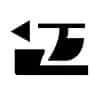 |
Draft Control | Manages the draft control system for implements |
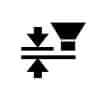 |
Position Control | Controls the height or position of attached implements |
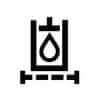 |
Hydraulic Oil Filter | Indicates the status of the hydraulic oil filter |
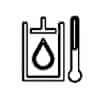 |
Hydraulic Oil Temperature | This warning light may illuminate if the hydraulic oil is overheating, signaling a potential issue with the hydraulic system. |
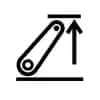 |
Lift Arm Control Up / Transport | Raises or lowers lift arms for transport mode |
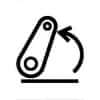 |
Lift Arm Control Upward | Raises tractor lift arms |
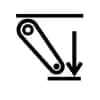 |
Lift Arm Control Down | Lowers tractor lift arms |
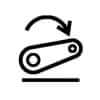 |
Lift Arm Control Downward | Lowers lift arms |
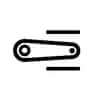 |
Lift Arm Control Block | Locks lift arms in position |
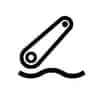 |
Lift Arm Control Float | Allows tractor lift arms to float |
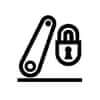 |
Lift Arm Control Lock | Locks tractor lift arm controls |
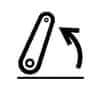 |
3-Point Lifting / Lowering | Controls the three-point hitch for lifting or lowering implements |
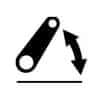 |
Lift Arm Height | Indicates the height of the lift arms |
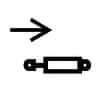 |
Remote Cylinder Retract | Retracts remote hydraulic cylinders |
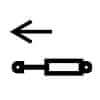 |
Remote Cylinder Extend | Extends remote hydraulic cylinders |
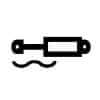 |
Remote Cylinder Float | Allows remote hydraulic cylinders to float |
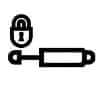 |
Remote Cylinder Lock A | Locks remote hydraulic cylinder control |
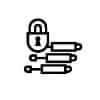 |
Remote Cylinder Lock B | Locks remote tractor hydraulic cylinder control |
Electric-related Dash Symbols
| Symbol | Name | Dashboard Symbol Description |
|---|---|---|
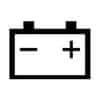 |
Battery Charging Condition | Indicates a malfunction in the tractor’s charging system, typically caused by a faulty alternator or battery, which may result in battery discharge. |
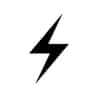 |
Electrical Power Accessories | Indicates the status of electrical power accessories |
 |
Master Lighting Switch | Controls the master lighting system |
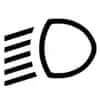 |
Headlight Low Beam | Activates low beam headlights |
 |
Headlight High Beam | Illuminates the tractor’s headlights for visibility in low-light conditions or during nighttime operation |
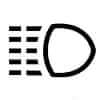 |
Headlight Flashing | Activates the headlight flash function |
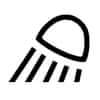 |
Work Light | Activates tractor work lights |
 |
Position Lamps | Controls position lamps |
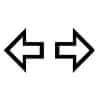 |
Turn Signal | Indicates tractor turn signals |
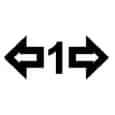 |
Turn Signal 1 Trailer | Indicates turn signals for #1 trailer |
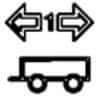 |
Trailer 1 Turn Signal Indicator | Indicates turn signals for #1 trailer |
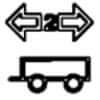 |
Trailer 2 Turn Signal Indicator | Indicates turn signals for #2 trailer |
 |
Hazard Warning Lights | Activates the hazard lights to warn others of potential danger |
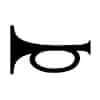 |
Audible Warning Device | Indicates the status of the audible warning device |
| Beacon Light | Controls beacon lights | |
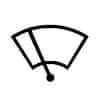 |
Windshield Wiper | Activates windshield wipers |
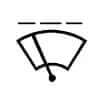 |
Windshield Wiper Intermittent | Activates intermittent windshield wiper function |
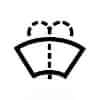 |
Windshield Washer | Activates windshield washer |
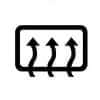 |
Rear Window Defroster | Activates rear window defroster |
It’s essential to familiarize yourself with these indicators and their meanings to ensure safe and efficient operation of the John Deere tractors:
- 1 Sub-Compact Series – 1023E, 1025R, 1026R.
- 2000 Series – 2000, 2100, 2200, 2300, 2400, 2700, 2800, 2900.
- 2000 Twenty Series – 2305, 2320, 2520, 2720.
- 2040 Series – 2040, 2240, 2440, 2640, 2940.
- 2050 Series – 2150, 2255, 2350, 2550, 2750, 2950.
- 2R Series – 2025R, 2026R, 2032R, 2036R, 2038R.
- 3000 Series – John Deere 3005.
- 3000 Twenty Series – 3120, 3320, 3520, 3720.
- 3050 Series – 3050, 3350, 3650.
- 3B Series – 3045B, 3050B.
- 3D Series – 3025D, 3035D, 3043D.
- 3E Series – John Deere 3025E.
- 3R Series – 3033R, 3038R, 3039R, 3045R, 3046R.
- 4000 Compact Series – 4100, 4200, 4300, 4400, 4500, 4600, 4700.
- 4000 Ten Compact Series – 4010, 4110, 4115, 4210, 4310, 4410, 4510, 4610, 4710.
- 4000 Twenty Compact Series – 4120, 4320, 4520, 4720.
- 4035 Series – 4235, 4435.
- 4040 Series – 4040, 4040S, 4240, 4240S, 4440, 4640.
- 4055 Series – 4055, 4255, 4455, 4555, 4755, 4955.
- 4060 Series – 4560, 4760, 4960.
- 41 Series – 1641, 2141, 2541, 2941, 3141, 3641.
- 45F Series – 1445F, 1745F, 1845F, 2345F.
- 46 Series – 846, 946, 1046, 1546F, 1846F, 2446F.
- 47 Series – 1047, 1247.
- 4M Series – 4044M, 4049M, 4052M, 4066M.
- 4R Series – 4044R, 4049R, 4052R, 4066R.
- 50 Series – 4050, 4250, 4450, 4650, 4850.
- 50 Compact Series – 650, 750, 850, 950, 1050.
- 5000 Advantage Series – 5105, 5205.
- 5000 Ten Series – 5210, 5310, 5410, 5510.
- 5000 Twenty Series – 5220, 5320, 5420, 5520.
- 5000 Utility Series – 5200, 5300, 5400, 5500.
- 5003 Series – 5103, 5203, 5303, 5403, 5603.
- 5015 Series – 5415, 5615, 5715.
- 5025 Series – 5225, 5325, 5425, 5525, 5625, 5725.
- 51 Series – 2251, 2351, 2651, 2951, 3351, 3651.
- 55 Compact Series – 655, 755, 855, 955.
- 55 Utility Series – 2155, 2355, 2555, 2755, 2855N, 2955, 3155.
- 5C Series – 5036C, 5039C, 5041C, 5042C.
- 5D Series – 5038D, 5039D, 5042D, 5045D, 5047D, 5050D, 5055D.
- 5E Series – 5045E, 5050E, 5055E, 5060E, 5065E, 5067E, 5075E, 5085E, 5090E, 5100E.
- 5E Limited Series – 5083E, 5093E, 5101E.
- 5G Series – 5075GN, 5080G, 5090G, 5090GN, 5100GF, 5100GN.
- 5M Series – 5065M, 5070M, 5075M, 5080M, 5085M, 5090M, 5095M, 5100M, 5100MH, 5100ML, 5105M, 5115M, 5115ML, 5120M, 5130M.
- 5R Series – John Deere 5080R, 5090R, 5100R, 5115R, 5125R.
- 6000 Series – 6200, 6300, 6400, 6506, 6600, 6800, 6900.
- 6000 TEN Series – 6110, 6210, 6310, 6410, 6510, 6510L, 6610, 6810, 6910.
- 6003 Series – John Deere 6403, 6603.
- 6010SE Series – 6010SE, 6110SE, 6210SE, 6310SE, 6410SE.
- 6015 Series – 6215, 6415, 6515, 6615, 6715.
- 6020 Series – 6520 Premium, 6620 Premium, 6820 Premium, 6920 Premium, 6920S Premium.
- 6025 Series – 6225, 6325, 6425, 6525.
- 6030 Series – 6230, 6330, 6430.
- 6D Series – 6100D, 6105D, 6110D, 6115D, 6125D, 6130D, 6140D.
- 6E Series – 6105E, 6110E, 6120E, 6125E, 6135E.
- 6J Series – 6110J, 6125J, 6145J, 6165J, 6180J.
- 6M Series – 6105M, 6110M, 6115M, 6120M, 6125M, 6130M, 6140M, 6145M, 6150M, 6155M, 6170M, 6175M, 6195M.
- 6R Series – John Deere 6R 110, 6R 120, 6R 130, 6R 140, 6R 145, 6R 155, 6R 165, 6R 175, 6R 195, 6R 215, 6R 230, 6R 250, 6105R, 6110R, 6115R, 6120R, 6125R, 6130R, 6135R, 6140R, 6145R, 6150R, 6155R, 6170R, 6175R, 6190R, 6195R, 6210R, 6215R, 6230R, 6250R.
- 70 Compact Series – 670, 770, 870, 970, 1070.
- 7000 Series – 7200, 7400, 7600, 7700, 7800.
- 7010 Series – 7210, 7410, 7510, 7610, 7710, 7810.
- 7020 Series – 7220, 7320, 7420, 7520, 7720, 7820, 7920.
- 7025 Series – 7425, 7525.
- 7030 Series – 7630, 7730, 7830, 7930.
- 7030 Small-Frame Series – 7130, 7230, 7330, 7430 Premium, 7530 Premium.
- 7J Series – 7185J, 7205J, 7225J.
- 7R Series – John Deere 7R 210, 7R 230, 7R 250, 7R 270, 7R 290, 7R 310, 7R 330, 7R 350, 7200R, 7210R, 7215R, 7230R, 7250R, 7260R, 7270R, 7280R, 7290R, 7310R.
- 8000 Ten Series – 8110, 8110T, 8210, 8210T, 8310, 8310T, 8410, 8410T.
- 8000/8000T Series – 8100, 8200, 8200T, 8300, 8300T, 8400, 8400T.
- 8020 Series – 8120, 8120T, 8220, 8220T, 8320, 8320T, 8420, 8420T, 8520, 8520T.
- 8030 Series – 8130, 8230, 8230T, 8330, 8330T, 8430, 8430T, 8530.
- 8050 Series – 8450, 8650, 8850.
- 8060 Series – 8560, 8760, 8960.
- 8070 Series – 8570, 8770, 8870, 8970.
- 8R Series – John Deere 8R 230, 8R 250, 8R 280, 8R 310, 8R 340, 8R 370, 8R 410, 8225R, 8235R, 8245R, 8260R, 8270R, 8285R, 8295R, 8310R, 8310RT, 8320R, 8320RT, 8335R, 8335RT, 8345R, 8345RT, 8360R, 8360RT, 8370R, 8370RT, 8400R.
- 9000 Series – 9100, 9200, 9300, 9300T, 9400, 9400T.
- 9020 Series – 9120, 9220, 9320, 9320T, 9420, 9420T, 9520, 9520T, 9620, 9620T.
- 9030 Series – 9230, 9330, 9430, 9430T, 9530, 9530T, 9630, 9630T.
- 9R Series – John Deere 9R 390, 9R 440, 9R 490, 9R 540, 9R 590, 9R 640, 9RX 490, 9RX 540, 9RX 590, 9RX 640, 9360R, 9370R, 9410R, 9420R, 9460R, 9470R, 9460RT, 9470RT, 9470RX, 9510R, 9510RT, 9520R, 9520RT, 9520RX, 9560R, 9560RT, 9570R, 9570RT, 9570RX, 9620R, 9620RX.
- Generation II Series – 830, 1530, 2030, 2630, 4030, 4230, 4430, 4630, 6030, 8430, 8630.
- Iron Horses Series – 4040, 4240, 4640, 4840, 8440, 8640.
- Milenio A Series – 30A, 40A, 45A, 50A, 70A.
- Milenio C Series – 20C, 25C, 35C, 40C, 45C, 50C, 60C, 70C, 75C.
- Milenio F Series – 50F, 70F, 75F, 85F, 90F, 100F, Q-85.
- Milenio R Series – 40R, 45R, 50R, 70R.
- New Generation Series – John Deere 1010, 1020, 2010, 2020, 3010, 3020, 4000, 4010, 4020, 4320, 4520, 5010, 5020.
Always refer to the operator’s manual for specific information about your tractor model’s dashboard warning lights and symbols.
Color of John Deere Indicator Lights
Pay Attention to Colors – John Deere warning lights and dashboard symbols are often color-coded to indicate the severity of the issue. For example, red lights usually indicate critical problems requiring immediate attention, while amber or yellow lights may signify less urgent issues. Flashing warning lights may indicate an active issue that needs to be addressed. Pay attention to the pattern and frequency of the flashing, as this can provide additional information about the problem.
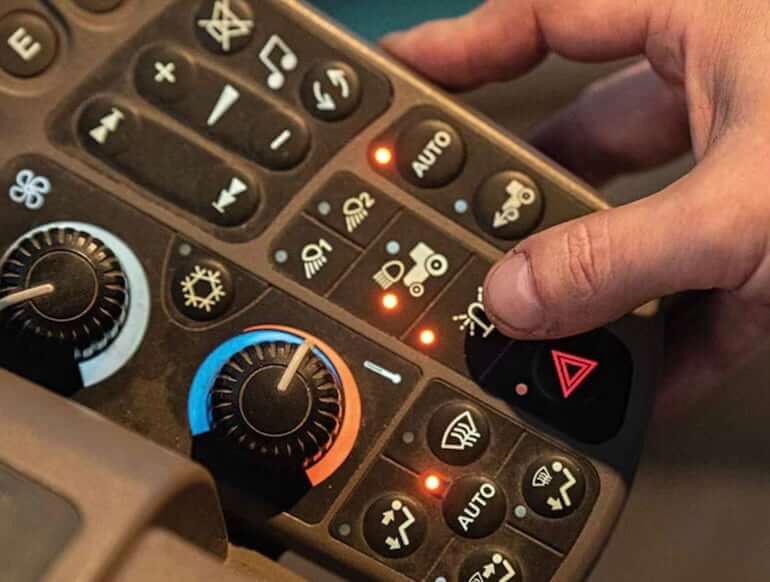
Here’s a breakdown of the common warning light colors on John Deere tractors and their meanings:
- Red Warning Lights: Red warning lights typically indicate critical issues that require immediate attention. These may include low oil pressure, high engine temperature, hydraulic system failure, or other serious malfunctions that could cause damage to the tractor or compromise safety. When a red warning light illuminates, the operator should stop the tractor immediately, shut off the engine, and address the problem before continuing operation.
- Amber Warning Lights: Amber warning lights signify less severe issues that still require attention. These may include low fuel levels, minor engine malfunctions, or problems with the transmission or hydraulic system. While not as urgent as red warning lights, amber lights should not be ignored. Operators should address amber warnings promptly to prevent more significant problems from developing.
- Green Warning Lights: Green warning lights typically indicate normal system operation or the activation of specific functions. For example, a green light may indicate that the tractor’s pre-heat system is engaged or that a particular feature, such as the PTO, is activated and ready for use. Green lights generally signify that everything is operating as intended and do not require immediate action from the operator.
- Blue Warning Lights: Blue warning lights are often used to indicate information or status related to systems such as the engine cooling system, the DEF (diesel exhaust fluid) level, or other fluid levels. For example, a blue light may indicate that the engine coolant temperature is within the normal operating range, or it may signal that the DEF level is low and requires refilling. Operators should pay attention to blue warning lights to stay informed about the tractor’s status.
- Yellow Warning Lights: Yellow warning lights typically indicate caution or provide information about non-critical issues. These lights may alert the operator to conditions such as activated turn signals, low tire pressure, or engaged parking brake. While yellow warning lights do not require immediate action, operators should still be aware of them and address any underlying issues as soon as possible to maintain safe and efficient tractor operation.
If you are unable to resolve the issue on your own, or if the warning light indicates a serious problem, seek assistance from a qualified John Deere technician or dealership. They have the expertise and diagnostic tools to identify and address more complex issues.
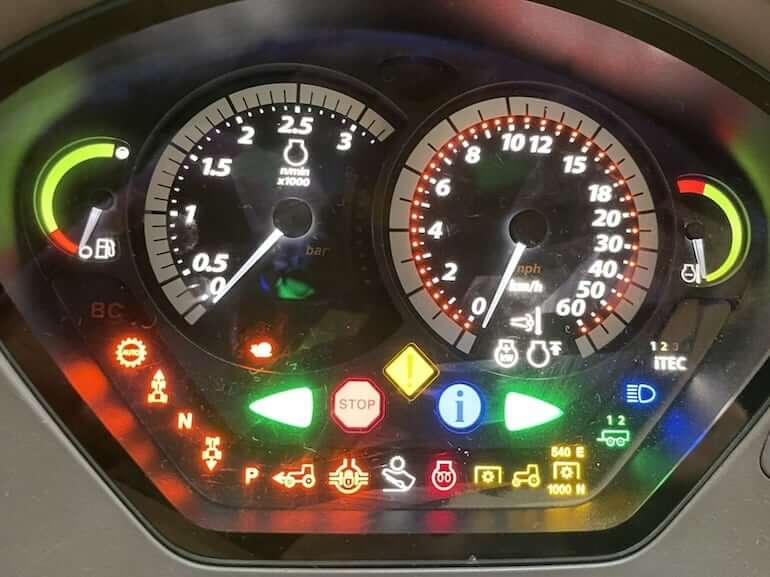
By following these steps and staying informed about your tractor’s warning lights and symbols, you can help ensure safe and reliable operation while minimizing the risk of damage or downtime.
How to Reset John Deere Warning Lights?
To reset John Deere warning lights, you typically need to follow these steps:
- Identify the Issue: First, determine the cause of the warning light. Consult your John Deere operator’s manual or the display panel for any error messages or codes associated with the warning light.
- Address the Problem: Address the underlying issue causing the warning light. This might involve refilling fluids, replacing filters, or resolving mechanical issues.
- Manual Reset: Some warning lights can be reset manually by pressing specific buttons or switches on the dashboard. Refer to your operator’s manual for instructions on how to reset each specific warning light.
- Disconnect Battery: In some cases, disconnecting the battery for a few minutes can reset the warning lights. However, this should be done cautiously, as it may also reset other settings or systems.
- Consult a Dealer: If you’re unable to reset the warning lights or if they keep reappearing after resetting, it’s best to consult a John Deere dealer or authorized service center. They can diagnose the issue using diagnostic tools and perform any necessary repairs or adjustments.
Always refer to your specific tractor model’s operator’s manual for detailed instructions on resetting warning lights and addressing maintenance issues.
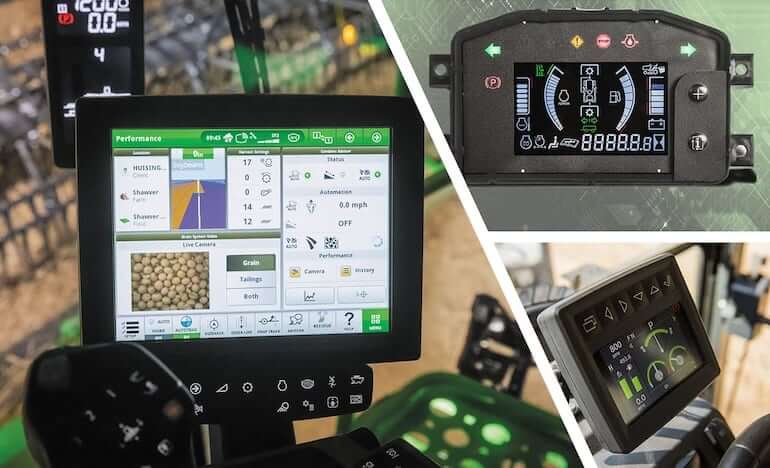
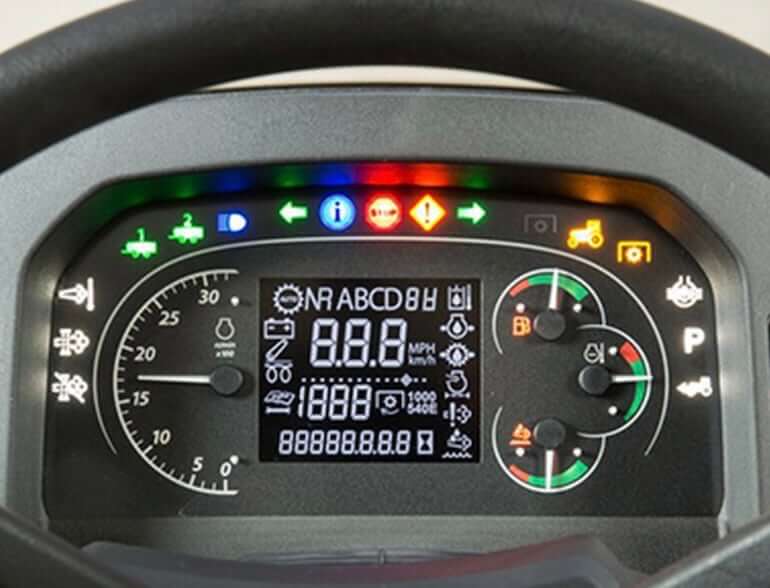
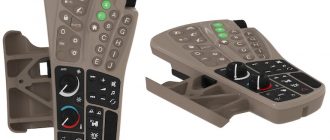
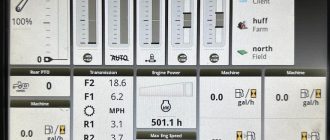
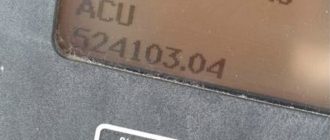
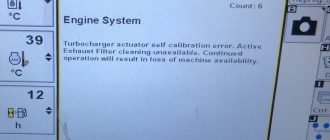
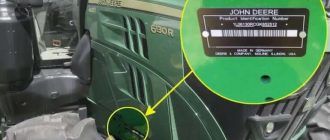
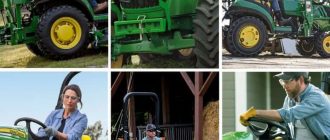
Are the dashboard symbols and warning lights on John Deere tractors different from the dashboard lights on Deere construction equipment?
John Deere tractors and Deere construction equipment may have different dashboard symbols and warning lights depending on the specific model and type of machinery. While there may be some overlap in the symbols and warning lights used, it is possible that there are unique symbols, gauges and warning lights specific to each type of equipment. It is recommended to consult the specific operator’s manual for the JD machine in question to ensure accurate interpretation of the dashboard indicators, symbols or warning lights.
My tractor John Deer 75 hp show warning light on dash board the sign not appear on manual. How can i get all warning lights?
What icon is shown on the warning light that is on?
PTO on symbol flashing on information display above pto rpm indicator on JD 3033r. Serial# 1LV3033RHHH10270
It typically indicates one of the following issues:
– PTO is engaged but not running at the proper RPM – The system may detect that the PTO is not operating within the expected speed range.
– PTO clutch or engagement issue – There may be a problem with the PTO clutch, preventing proper engagement.
– Electrical fault in the PTO system – A loose connection, damaged wiring, or a faulty switch could trigger the warning.
– Overload or overheating – The PTO system may be under excessive load, causing the warning to flash.